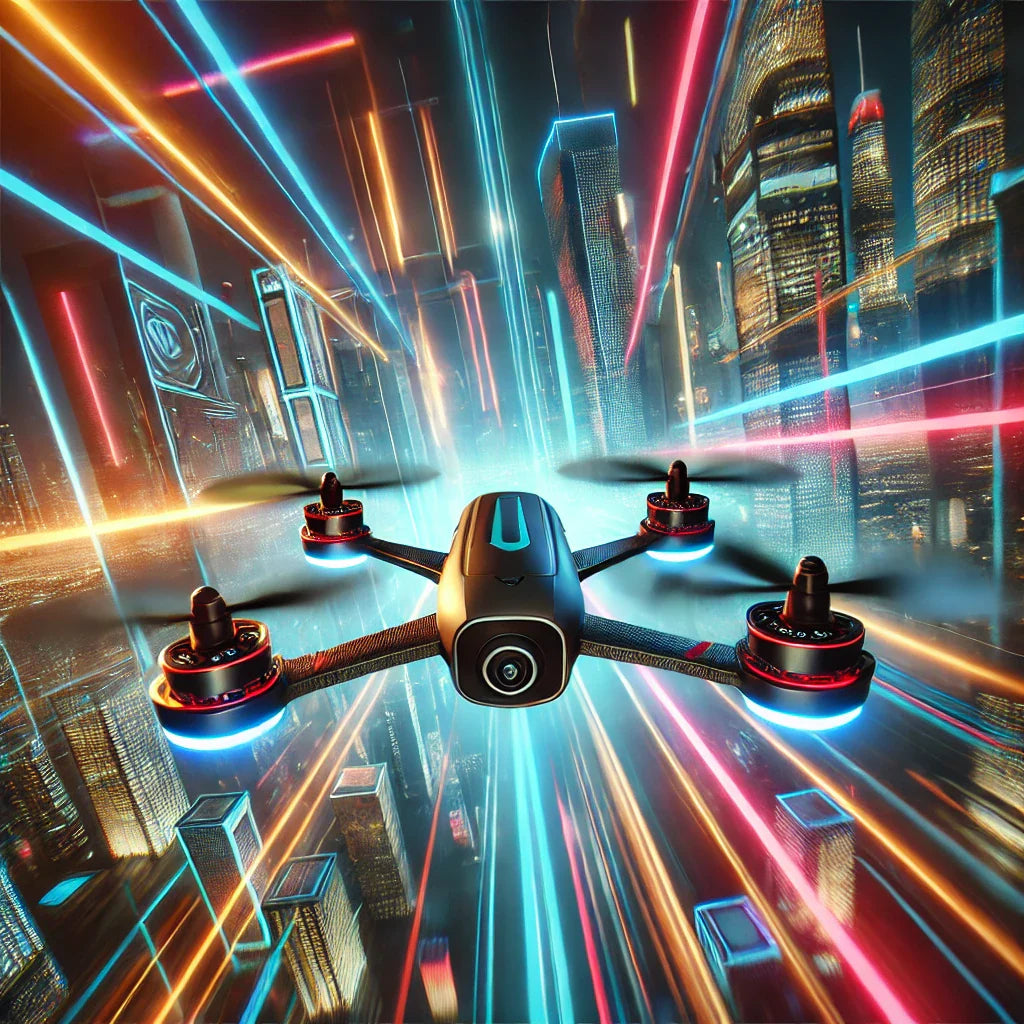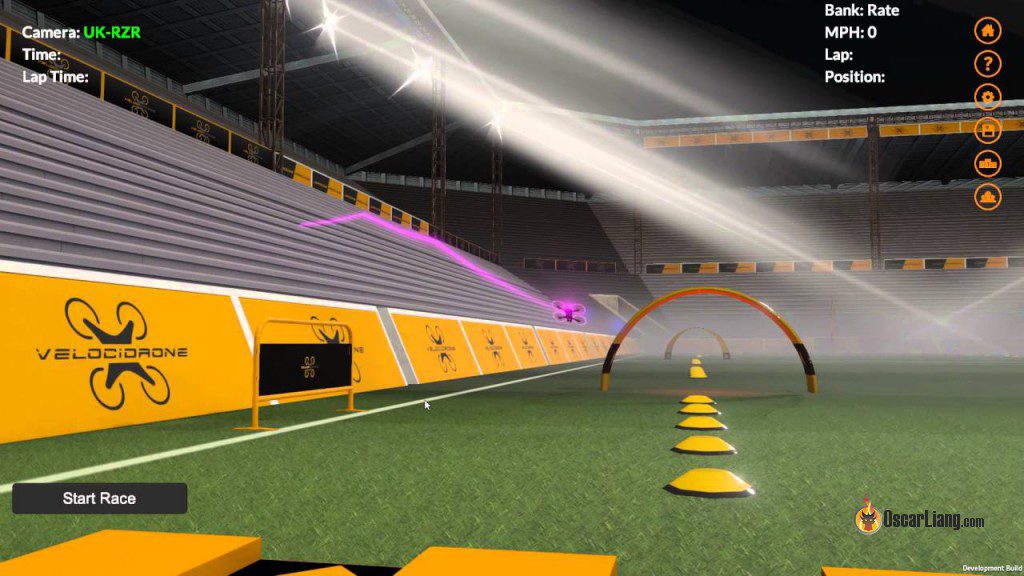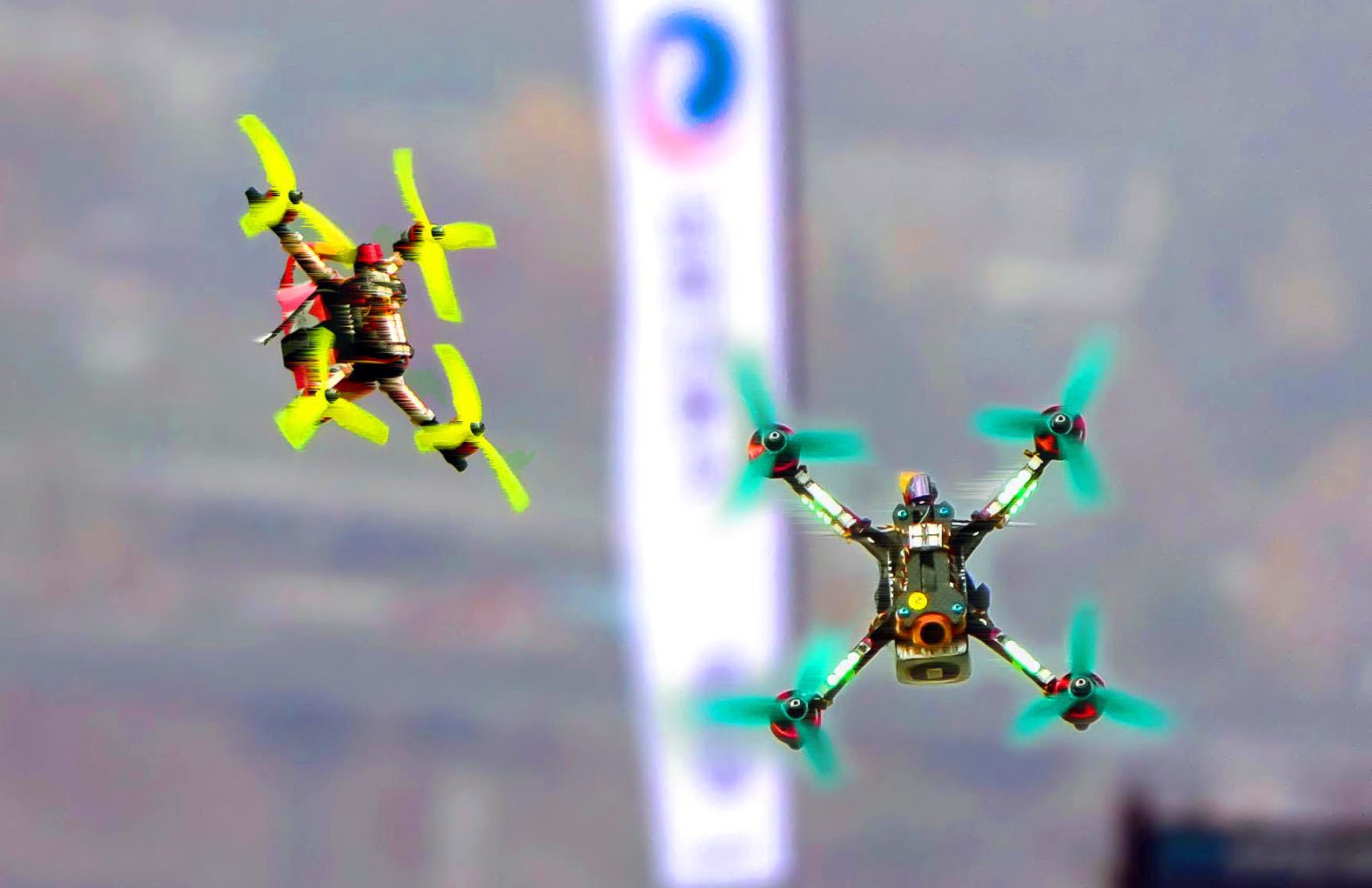
What is FPV? A Complete Beginner’s Guide
Introduction
FPV (First-Person View) drone flying is an immersive experience where pilots see through the eyes of their drone via real-time video transmission to FPV goggles or a monitor. Unlike traditional drones, FPV drones are designed for agility, speed, and freestyle maneuvers, making them popular for racing, cinematic flying, and professional aerial videography. If you're new to FPV, this guide will help you get started and level up your flying experience.

BetaFPV - Aquila 16 FPV RTF KIT
What is FPV?
FPV stands for First-Person View, meaning pilots control their drones using a live video feed transmitted from an onboard camera to FPV goggles or a screen. This gives the sensation of flying inside the drone, making it ideal for racing, freestyle tricks, and cinematic shots.
Types of FPV Drones

1. Cinewhoops – Small, ducted propeller drones ideal for indoor flying and cinematic shots.
2. Freestyle FPV Drones – Built for agility and stunt flying with acrobatic maneuvers.
3. Racing FPV Drones – Designed for high-speed flight with responsive controls.
4. Long-Range FPV Drones – Equipped with extended battery life and strong signal transmission for distance flying.
5. TinyWhoops – Micro drones for indoor practice and learning the basics of FPV flight.
How to Start Flying FPV
Getting into FPV requires the right gear and practice. Here’s what you need:
Essential FPV Gear
1. FPV Drone – Choose based on your intended use (freestyle, racing, cinematic, etc.).
2. Radio Transmitter (TX) – A controller that communicates with your drone.
3. FPV Goggles – Provide a real-time view from your drone’s perspective.
4. Batteries & Charger – Ensure you have multiple LiPo batteries for extended flights.
5. FPV Simulator – Helps build skills before flying real drones (e.g., Liftoff, VelociDrone).
6. Tools & Spare Parts – Keep extra propellers, motors, and screwdrivers for quick fixes.

Step-by-Step Guide to Start Flying FPV
- Practice on a Simulator – Learn basic controls in a risk-free environment.
- Start with a TinyWhoop – Small indoor drones help beginners master the basics.
- Learn to Hover & Basic Movements – Get comfortable with throttle, pitch, roll, and yaw.
- Fly in Line of Sight (LOS) First – Understand how the drone moves before relying on FPV goggles.
- Go FPV! – Once comfortable, start flying using your goggles for a fully immersive experience.

Credit: Ishveena Singh | DroneDJ
How to Upgrade Your FPV Drone
As you gain experience, you may want to enhance your FPV setup. Here are some upgrades to consider:
- Upgrading the Camera
A higher-resolution FPV camera with better dynamic range improves visibility and video clarity, especially in low-light conditions. - Switching to Digital FPV Systems
Analog FPV is common for beginners, but upgrading to a digital system like DJI FPV enhances clarity, range, and transmission stability. - Improving the Radio Link
Better radio transmitters and receivers improve signal reliability and range. Consider Crossfire or ExpressLRS systems for long-range control. - Upgrading Motors & ESCs
Stronger motors with higher KV ratings provide more power and responsiveness. Upgrading ESCs (Electronic Speed Controllers) ensures better efficiency and smoother performance. - Using Better Batteries
Switching to high-capacity and high-C-rated LiPo batteries gives longer flight times and better performance. - Adding a GoPro for Cinematic Shots
If you want professional-grade video, mounting an action camera like a GoPro or Insta360 on your FPV drone significantly improves footage quality. - Fine-Tuning Betaflight Settings
Tuning your PID settings in Betaflight or other flight controller software helps refine your drone’s responsiveness and flight smoothness.
Final Tips for FPV Success
- Fly in Open Spaces – Avoid obstacles while learning to minimize crashes.
- Join FPV Communities – Engage with other pilots in online forums and social media groups.
- Always Carry Spare Parts – Crashes are common, so have extra propellers, motors, and screws.
- Follow Local Drone Regulations – Ensure compliance with your country’s drone laws.
Conclusion
FPV drone flying is an exhilarating hobby that offers endless possibilities for racing, freestyle flying, and cinematography. Whether you're just starting or looking to upgrade, this guide provides the foundation for your FPV journey. Invest in quality gear, practice consistently, and soon you'll be mastering the skies with confidence!
